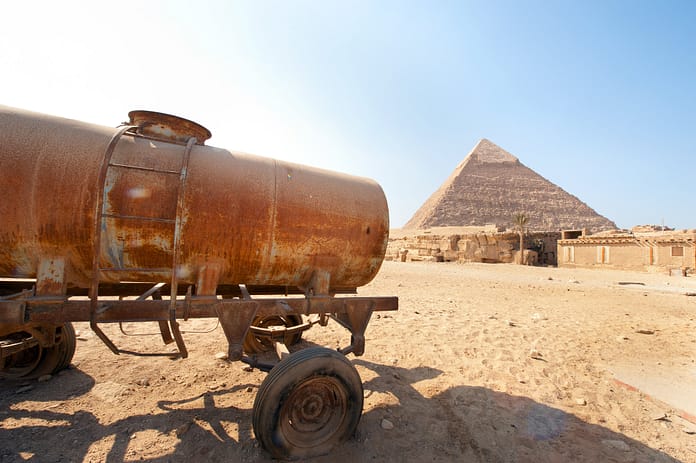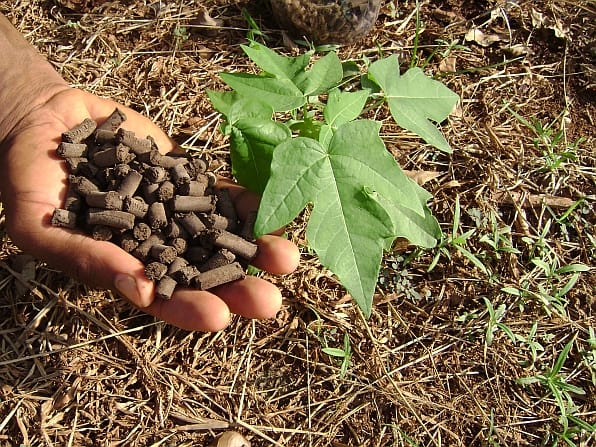(Nairobi/Colombo, 17 December 2020) – From source to sea, our waters are contaminated by a plastics scourge. A new study by the UN Environment Programme (UNEP) and the International Water Management Institute (IWMI) offers a number of technological solutions aimed at tackling one of the world’s most pressing issues.
Approximately 8 million metric tonnes of plastic litter flow to the ocean annually, and only 9% of plastic waste ever produced has been recycled. A large percentage of the rest ends up in landfills, dumps and the environment, often finding its way to rivers, lakes and oceans through runoff, leakage, flushing of disposable wipes and hygiene products.
Another major issue relates to microplastics – those plastics that are smaller than 5 millimeters, and that pose increasing environmental, economic and health hazards. Sometimes these are intentionally added to products, for example in cosmetics, for seed coatings, paint, washing powders and other applications. They are also generated from wear and tear, through the production of synthetic textiles and tyre usage. In addition, discarded plastics break down into these smaller particles through natural weathering processes. Microplastics can enter water bodies through different pathways, including atmospheric deposition, run-off from land, roads and through municipal wastewater.
Much effort has been made to both identify the scale of the threat of plastics to the health of humans, and ecosystems, along with solutions to tackle it. Water pollution by plastics and microplastics: a review of technical solutions from source to sea explores a set of innovative tech solutions for use in various scenarios.
Among these potential technologies include:
- Introducing debris-cleanup boats, debris sweepers and sea-bins to remove plastics and other wastes carried into water bodies;
- Protecting large bodies of water by introducing wetlands along coastlines;
- Secondary and tertiary wastewater treatment which relies on membrane filtration to prevent microplastics entering rivers and lakes;
- Advanced coagulation technology to make water contaminated with microplastics drinkable;
- Promoting sustainable waste management practices to reduce plastic leakage.
A key principle of this work is preventing untreated wastewater, which is often packed with plastics and microplastics, from entering the environment in the first place. The study details financially sustainable waste recycling that is socially and legally acceptable, and environmentally friendly.
“Waste management in most cities of developing countries is an expensive, labor-intensive and low-margin business, which explains why a large share of the generated waste is inadequately managed. The wastewater coming from urban residential, industrial and commercial settings is full of contaminants including plastics, microplastics and other debris,” said Dr. Mark Smith, Director General of IWMI. “It is very important to reduce and remove plastic before it enters into wastewater treatment plants or freshwater bodies”.
The study, composed of a toolkit and catalogue, analyzes the most relevant technologies to improve current waste and wastewater management practices and presents both the pros and cons of applying specific solutions to mitigate levels of plastic pollution from source to sea.
“To effectively tackle the crisis of plastic pollution in our freshwater and marine ecosystems, we need innovative technologies that will serve us for years to come. We need to look at how we address waste production, waste management as well as the treatment of wastewater and run-off holistically, at source, and across sectors – a key part of building healthier, more sustainable societies,” said Inger Andersen, Executive Director of UNEP. “The technologies highlighted in this study should be supported by legislation, finance and awareness in order to lead to real change on the ground”.
Decision makers, experts and relevant stakeholders need to come together in order and to agree on the desired water quality in their local context and a sustainable combination of solutions.
Water pollution by plastics and microplastics: a review of technical solutions from source to sea is based on research funded by the United Nations Environment Programme (UNEP) and the Water, Land and Ecosystem research program of the CGIAR.
Notes to Editors
The International Water Management Institute (IWMI)
The International Water Management Institute (IWMI) is an international, research-for-development organization that works with governments, civil society and the private sector to solve water problems in developing countries and scale up solutions. Through partnership, IWMI combines research on the sustainable use of water and land resources, knowledge services and products with capacity strengthening, dialogue and policy analysis to support implementation of water management solutions for agriculture, ecosystems, climate change and inclusive economic growth. Headquartered in Colombo, Sri Lanka, IWMI is a CGIAR Research Center and leads the CGIAR Research Program on Water, Land and Ecosystems (WLE). www.iwmi.org
United Nations Environment Program (UNEP)
UNEP is the leading global voice on the environment. It provides leadership and encourages partnership in caring for the environment by inspiring, informing and enabling nations and peoples to improve their quality of life without compromising that of future generations. www.unep.org
For more information, please contact:
Toby Johnson, Head Global Communications and Knowledge Management, IWMI
e-mail: t.johnson@cgiar.org
tel +94 (0)779425984
Keisha Rukikaire, Head of News and Media, UNEP
e-mail: rukikaire@un.org
tel: +254 722 677747

















